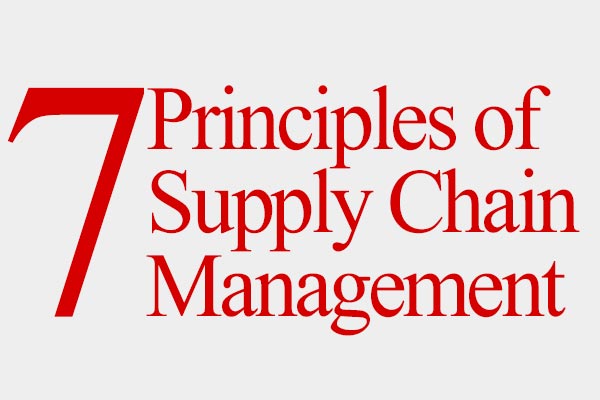Transportation Best Practices/Trends: How shippers can gain from dimensional pricing
As LTL carriers announce pricing model shifts where dimension and density trumps classification, shippers can turn the tables and realize more benefit from collaboration.
Note to shippers: Hang onto your hat, because multiple waves of change are coming.
As less-than-truckload (LTL) contracts are being rebid, many carriers are raising the issue with shipper and third-party logistics provider (3PL) customers of switching to dimensional or density pricing. If it hasn’t affected your company yet it will likely do so in 2016.
Dimensional pricing replaces the “class” of an item with a focus on its height, width, depth, and most likely weight. With that in mind, you’ll be seeing references to “density pricing” and “dimensional pricing.”
The nearly 80 year-old National Motor Freight Classification (NMFC) classification methodology uses several factors including density to classify freight. These include “demonstrated transportation characteristics, including density, stowability, handling and liability” characteristics that are averaged within one of 18 classification ranges.
The last factors are weight, distance, and competitiveness of the lane that are accounted for in the rate table of the carrier or rate conference. Carriers subscribing to NMFC conference rate tables based upon class, weight, and distance have been approaching 90 percent discounts off of conference published rates. Many are determined to get out of this system by first eliminating the classification references.
With that, class, weight, and distance are being replaced by density and distance. The additional rating factors are averaged for many pricing proposals and these averages will only be visible in individual carrier rules tariffs. With regard to timing, the price is fixed for the length of the contract, therefore averaging season, risk factors, handling, pick up and delivery conditions, day of the week, and time of day.
This last point is important for shippers. The shipper can control many of these factors and others in order to help the carrier save in operating costs. These factors and their daily variations need to be on the table to establish dynamic pricing.
Unilateral action in changing pricing models causes pain
There are at least three pain points in some of the initial density proposals as expressed by shippers. First, those shippers who were able in the past to negotiate Freight All Kinds (FAK) rates are now seeing their lighter; less dense product freight prices go up. And as carriers average value and risk, they tend to be conservative—and that results in higher averages for factors such as release value (insurance).
A number of density tariffs that I recently reviewed assume Class 100 for value of the goods, representing a release value of about $30/pound. This could very well be too much or too little coverage for a shipper’s products. Thus, shippers of mixed products are seeing a trend toward higher rates when their less dense, less valuable products are shipped under the proposed tariffs.
Second, the negative reaction by procurement professionals to a shift away from RFPs may result in carriers being forced to keep the old rate models in place in order to keep the business. That’s especially true when a large shipper runs the transportation bidding through purchasing, which in turn sends out a classic rate tariff RFP that asks for discounts and a FAK classification. However, as the movement away from classification-based price models gains momentum, carriers will simply decline to bid on these RFPs and offer only density rate tables. Carriers need to educate multiple shipper functions.
A few hybrids have appeared where densities are grouped to reflect traditional classes, but shippers have to be cautious about release value and service restrictions assumed in these rates.
The third pain point is technology, as most shippers employ a transportation management system (TMS) that relies on tariff rate tables provided by carriers or third party conferences. A leap in technology and process is emerging to accommodate more complex rating schemes via direct interface (API) in order to enable operational savings.
4 moves shippers need to make
There are four key actions that shippers need to make in preparation for the coming freight pricing revolution.
First, shippers need to learn about pricing models verses rate tables. Pricing models will likely be more complex, but it’s the disaggregation of pricing—beyond just density—where the savings opportunities will be found.
Second, make changes to shipper-controlled processes to enable more flexible shipping and handling options. Work with customers and your own receiving dock to make receiving times more flexible and to turn trucks faster. Determine if you can self -insure to earn lower release values when shipping.
Third, invest in new technology and connectivity to enable API calls to carriers for rates and service metrics. Use the cloud and third party integrators to reduce the need for internal IT support. Agree to use the carrier’s rate system as the system-of-record to simplify invoicing and auditing and to reduce errors.
Fourth, learn about collaborative contracting and know which carriers and 3PLs are ready to implement it. Remember that the International Association for Contract and Commercial Management and major universities are promoting the idea of collaborative contracting thus legitimizing it for purchasing professionals. A growing list of carriers and shippers are experiencing the benefits of breaking the old paradigm of class-based rates and annual bidding on pricing tables.
Getting started
Shippers approached by carriers to start using dimensional or density pricing should respond that they would only entertain this new process if more elements of freight cost are on the table.
A combination of the right partner, a collaborative process, and the technology to support dynamic interaction for optimization is the future for shipper and carrier partnerships.
Smart carriers and 3PLs are out preaching the future but it takes shipper acceptance and promotion to make changes in contracts. The industry will get beyond the old rate system only when we invest time, tools, and resources in pricing models that reward innovation.












